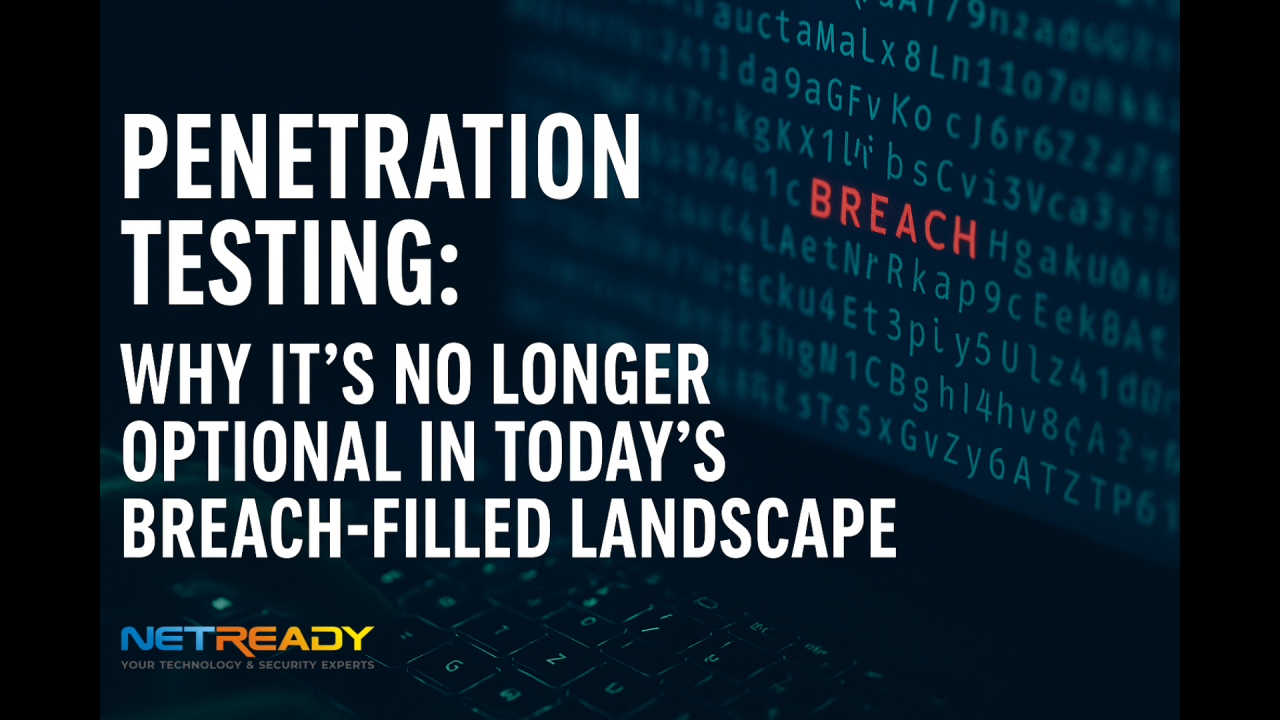
Every week, another breach hits the headlines. From healthcare systems to retail giants, organizations of all sizes are being compromised by cybercriminals exploiting vulnerabilities most never knew existed.
Recently, a client came to us after a national service provider they used suffered a breach. The attack originated from a misconfigured endpoint that hadn’t been tested in years. It wasn’t negligence, it was a lack of visibility. Like many companies, they had invested in firewalls, antivirus, and even cloud backups, but they had never conducted a true penetration test.
That’s what led me to write this article. In today’s threat landscape, penetration testing, or pen testing, is no longer a luxury or an annual checkbox. It’s a business necessity.
What Is Penetration Testing?
Penetration testing is a simulated cyberattack against your IT systems to identify vulnerabilities before real attackers do. It’s not just vulnerability scanning. Pen testing mimics real-world tactics, techniques, and procedures (TTPs) used by threat actors to test how well your systems hold up under pressure.
A skilled ethical hacker will attempt to exploit weaknesses in:
- Firewalls and network segmentation
- Cloud configurations
- Web applications
- User credentials and access controls
- Unpatched systems or legacy software
The goal? To find the gaps in your armor before someone else does.
Why Pen Testing Is More Critical Than Ever
Here’s the reality: cybercriminals are evolving faster than most organizations’ defenses. According to IBM, the average time to identify a breach is still over 200 days. That gives attackers a massive head start.
Penetration testing helps you:
- Uncover hidden vulnerabilities that automated scans miss
- Assess real-world risk by simulating targeted attacks
- Validate your defenses including endpoint protection, SIEM, and MFA
- Meet compliance requirements under frameworks like HIPAA, PCI DSS, NIST, and SOC 2
- Avoid reputational damage by addressing weaknesses proactively
With AI-powered phishing, ransomware-as-a-service, and supply chain attacks on the rise, your security posture is only as strong as its weakest (untested) link.
Internal Teams Can’t Always See What’s Missing
Many IT and security teams do their best to patch, monitor, and respond but they’re often too close to the environment. Blind spots are inevitable.
Pen testing brings an outside perspective, and more importantly, simulates how a real adversary thinks:
- Can an attacker escalate privileges once inside?
- Are there lateral movement paths from low-risk systems to high-value targets?
- Will your team detect and stop the attack—or miss it entirely?
Without a test, you’re guessing. And in cybersecurity, guessing is expensive.
Use Case: Pen Testing a Multi-Site Healthcare Network
We recently completed a penetration test for a regional healthcare provider with 3 locations. Their internal IT team was confident in their firewalls and EDR setup but hadn’t tested external-facing applications in over a year.
Here’s what we uncovered:
- A forgotten admin portal still accessible via public IP
- Hardcoded credentials in a legacy medical imaging system
- A VPN gateway with MFA misconfigured on two of six locations
- Weak segmentation between clinical and guest Wi-Fi networks
Within two weeks of our report, they remediated all findings. More importantly, they implemented quarterly testing and restructured internal processes for secure change management.
How Often Should You Conduct a Pen Test?
Best practices suggest:
- Annually at minimum for most organizations
- After any major infrastructure change (like cloud migration or new application deployment)
- After a breach or suspected compromise
- Quarterly for high-risk industries like finance, healthcare, or SaaS providers
Remember, pen testing is not a one-time event. It’s part of a continuous improvement cycle.
Pen Testing vs. Vulnerability Scanning
Vulnerability scans are automated tools that identify known issues. They’re fast and useful but limited.
Pen testing simulates how a human attacker would chain multiple vulnerabilities together. It answers questions scanners can’t, like:
- Can that unpatched system actually be exploited?
- What’s the impact if someone breaches this server?
- Will your monitoring systems catch the breach in real time?
In short: vulnerability scans tell you what’s there. Pen testing shows you what’s possible.
The Road Ahead
Cyber threats are growing more advanced and more automated. The only way to stay ahead is to test like your business depends on it, because it does.
Penetration testing isn’t about fear. It’s about visibility, resilience, and action. At Netready, we help organizations across Southern California assess their security posture through tactical, intelligence-driven testing.
If you haven’t tested your defenses recently, or ever, now is the time.
Zac Abdulkadir
CEO of Netready
With a career spanning over 25 years, Zac Abdulkadir is a recognized authority in cybersecurity and IT compliance, dedicated to securing businesses against evolving threats.

 310-553-3055
310-553-3055 213-463-2100
213-463-2100
